The roads along the Tuscan territory, those traced by the Etruscans, do not heavily modify nature, but rather go along with it, delicately following its boundaries, and gracefully fit into a landscape cradled in the past that, only at times and for a few moments, seems to be all too distant. And it is precisely by following the paths that climb between the Merse and Ombrone Senese valleys that one will arrive, not without difficulty, at the small village of Murlo. It is a place less well known and less beaten by the torrents of tourists that invade the hot Tuscan cities, but it would seem that it is precisely this shy withdrawal from a noisy life that gave it its name, which seems to derive from the Latin murlus, meaning “little wall,” precisely to identify a “small walled place.” Other studies, however, cling firmly to the Latin word mus, meaning mouse, since in ancient times and in this particular area of Tuscany there was a custom of placing rampant mice on municipal coats of arms.
To this day, the tiny hamlet presents itself with a closed-in form that silently protects itself from the outside world that continues to run and change rapidly.
It is a mysterious history that of Murlo, which is inscribed in what is the plot of the Etruscan civilizations that from the seventh century B.C. populated the area of Poggio Civitate, two kilometers southeast of the village, and the edge of the Ombrone River .
The aristocratic class then began to capitalize on the surrounding environmental resources, then trading their fruits across the navigable rivers and soon becoming extremely wealthy and prosperous, especially in the so-called Archaic and Orientalizing periods. Although we are talking about times so distant as to seem blurred and whose contours fade as we proceed at a quick and determined pace into the future, here instead are the Etruscan traces present in Murlo that are firmly established and extremely visible.
It is a story that stumbles among the dense weavings of legend and popular narratives: the area, in fact, is known as the “Treasure Plain” because everyone, from the local inhabitants to the far more wandering shepherds, was aware of the presence of unusual fragments of ceramics and bronzes that, on rainy days, emerged from the ground. Legend has it that on this very floor could be found a very deep hole that housed the large statue of a golden calf, which, according to the biblical story found in Exodus, represents the disobedience of the people of Israel to divine command and their propensity toward idolatry.
Thus, in 1966, guided by the mysteries surrounding the fascinating site, a group of woodcutters accompanied archaeologists Ranuccio Bianchi Bandinelli and Kyle Meredith Phillips Jr. to these areas, who led numerous discoveries, initiating an unprecedented collaboration between the scholars and the Murlo community. Under Phillips’ expert guidance from Bryn Mawr College, the work began to reveal the presence of impressive architectural remains on the highest peak of the plan, and even more surprising was the discovery of a very large core of terracotta sculptures adorning a building, constituting one of the best examples in the region of rooftop systems. Thus was born, in the late 1980s, with rarefied composure, the Murlo Archaeological Museum, whose strength and particularity is precisely that it houses materials from a single site, the majority of which are furnishings and utensils for everyday life.
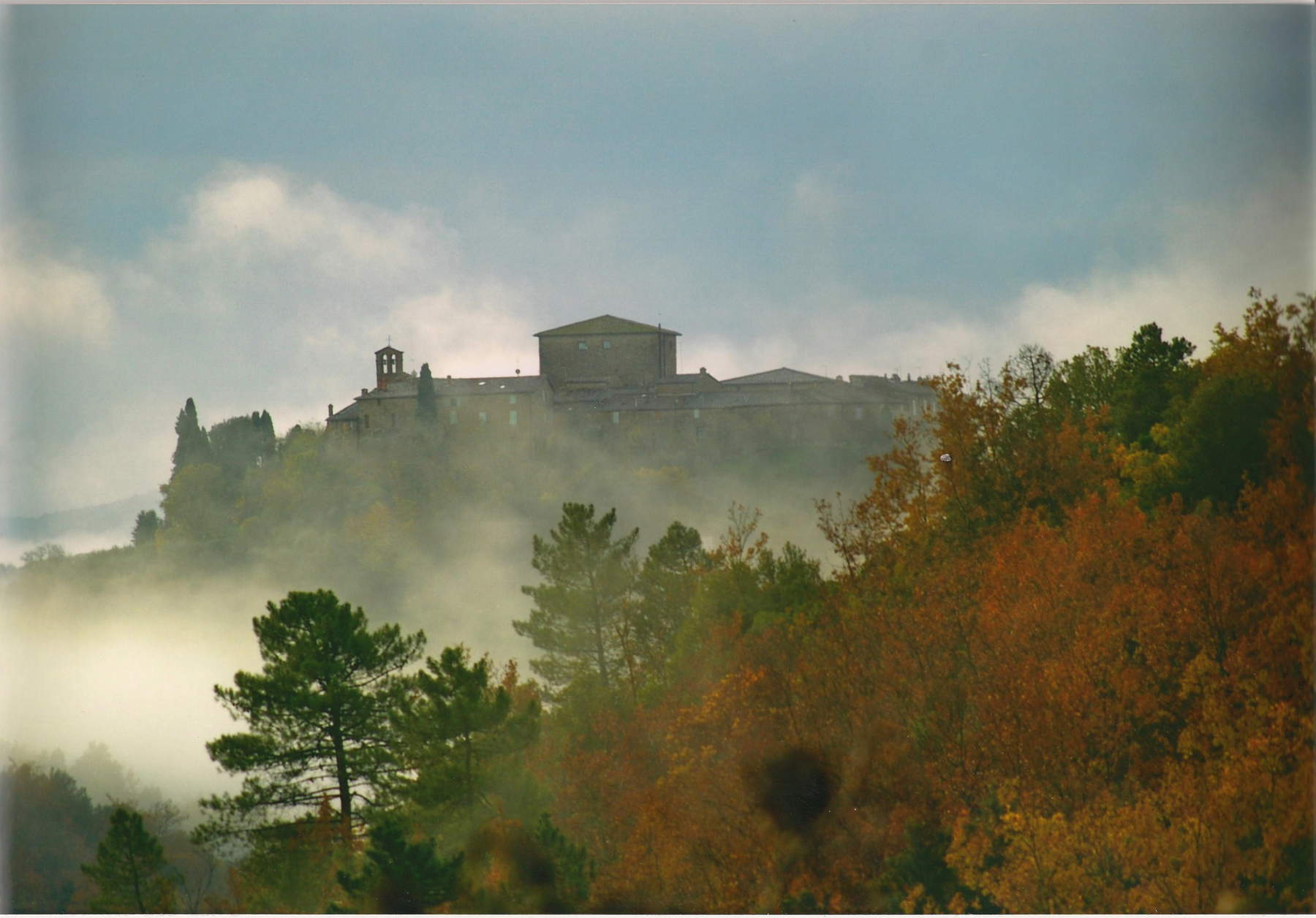
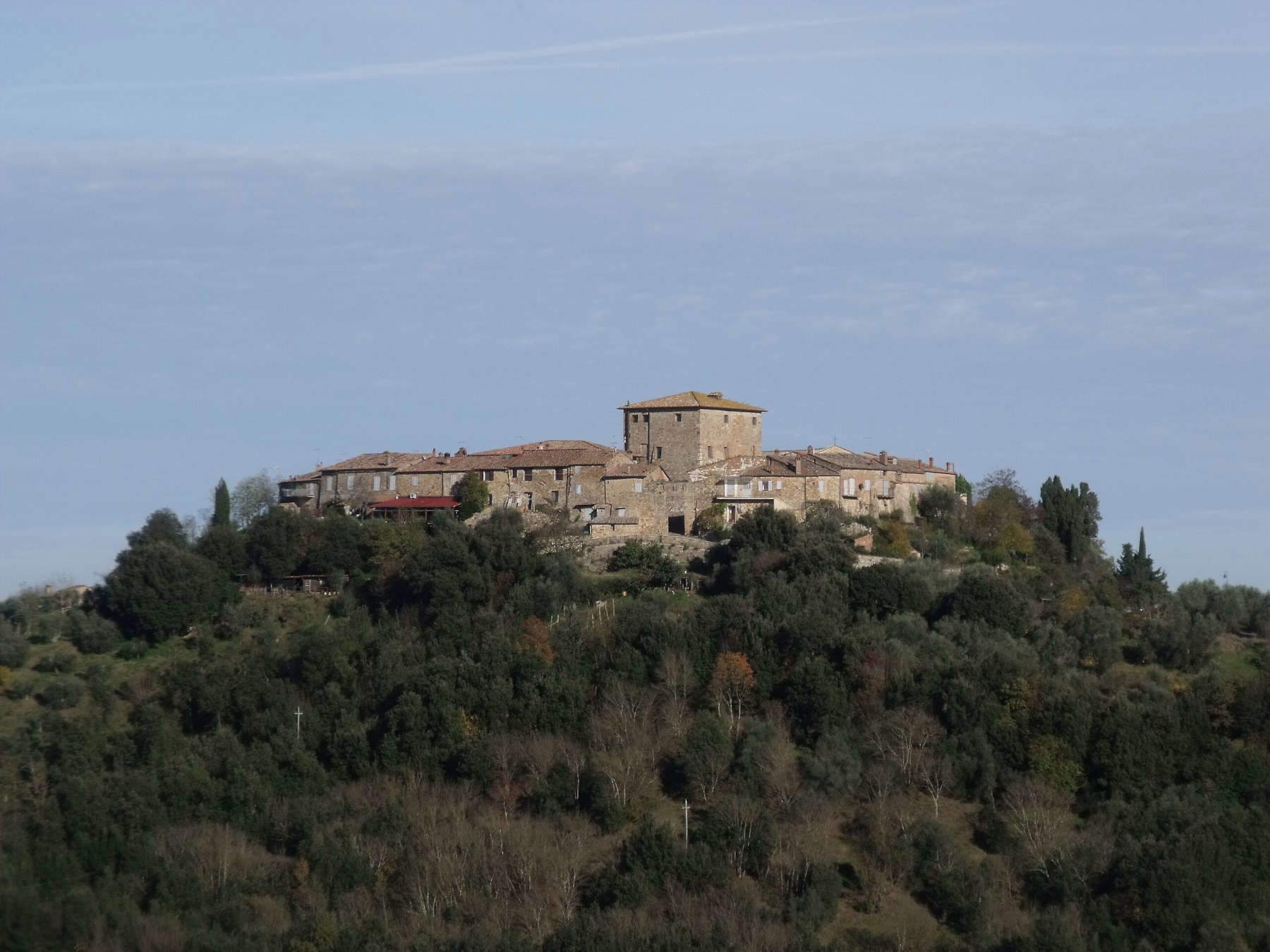
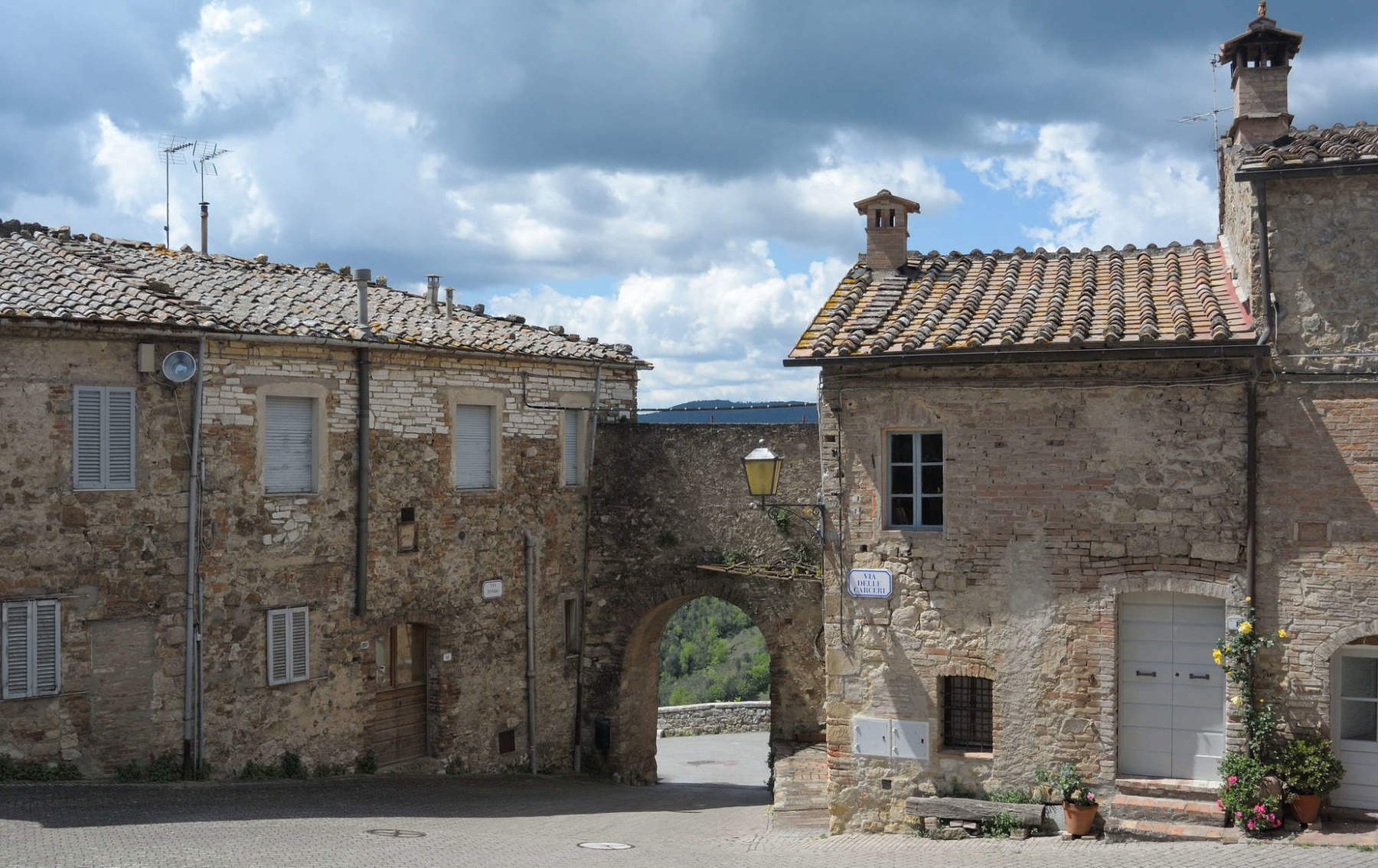
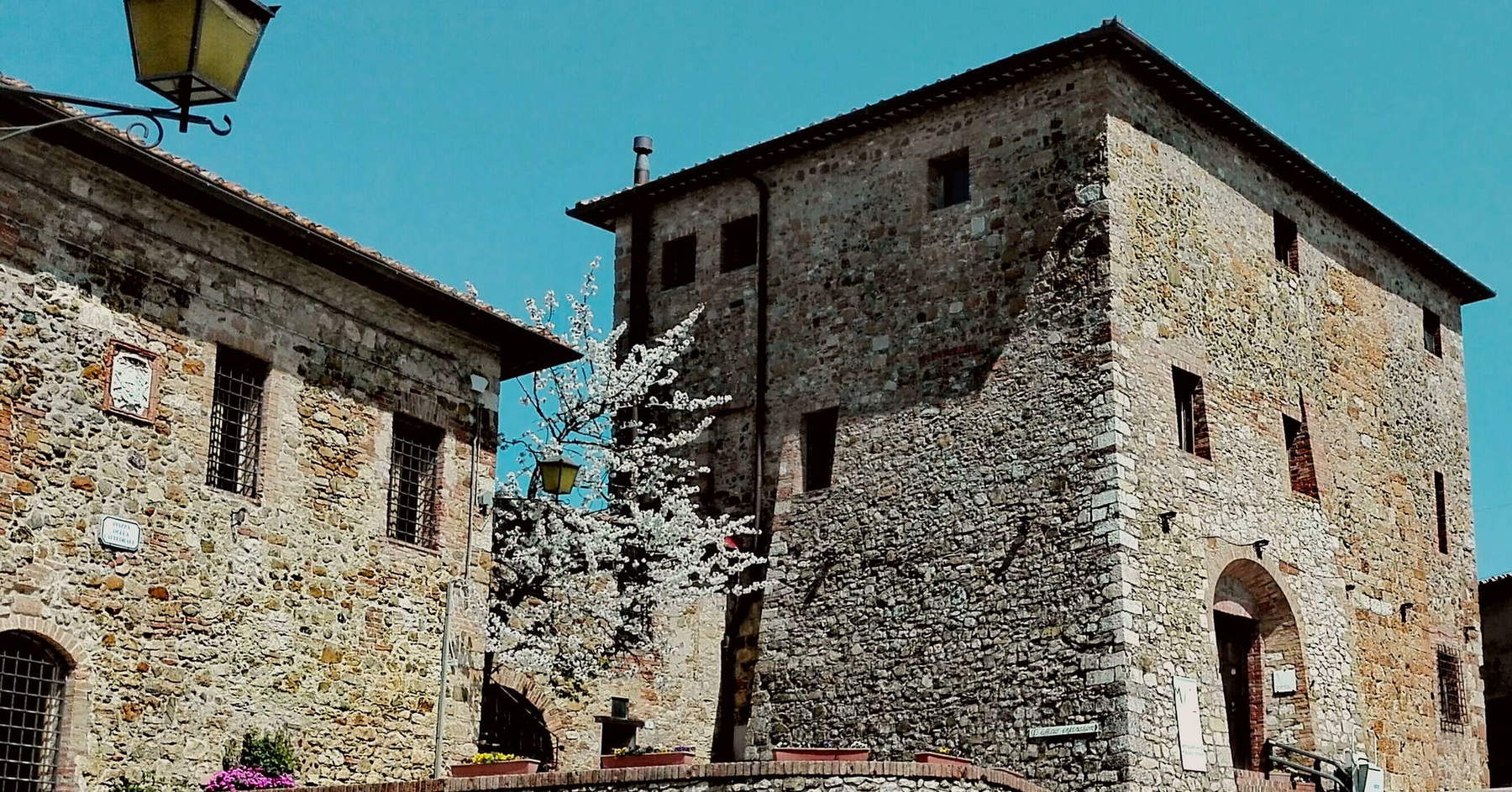
The visit, broken down into the three floors of the palace, now presents itself as a compelling ascent through history starting from the earliest period, the Archaic period, up to the Orientalizing period. Thus, the second floor houses the reconstruction of the Archaic aristocratic palace and, further on, the craft workshop of the Orientalizing period where various luxury objects in gold, ivory and glass were produced to enrich the lord’s house and for exchange with other important families. From the workshop itself comes a sphinx of such extreme quality that, for a long time, it was thought to be an artifact from the Orient.However, the Etruscans were a peaceful and luxury-loving people whose essential and elegant lines of objects manage, even today, to give off a patina of fascination and mystery that seems to come from faraway and all too civilized places.
The excavations at Poggio Civitate that began during 1966 thus led to the discovery of one of the richest and most complex archaeological realities in northern Etruria whose abundance of terracotta material came mainly from the roofing structures of buildings.
Among the strata comprising the earliest phase of the architectural complex emerged numerous specimens of bucchero vases, an impressive collection of imported Greek artifacts, and a very wide range of impasto vases and common kitchen pottery, along with large water containers.
The study of the forms and functions of the vessels, particularly domestic ones, played a key role in understanding the food pattern of that society, providing valuable information on production practices and delineating with profusion the everyday life and material culture of the time, faintly opening a window to the past.
The large pithoi, sunken into the rammed earth floors of the residence’s storerooms, stored water and grains; the ollae, plentiful and of various sizes, served as vessels for cooking as well as for storing fat and honey, while the stoves in Murlo were of two types: those used to support the pot on the fire, characterized by cylinders open at the top and pierced on the sides, and the flat ones, open on one side and closed by a bell-shaped lid, used for cooking barley or wheat flatbreads and garden vegetables.
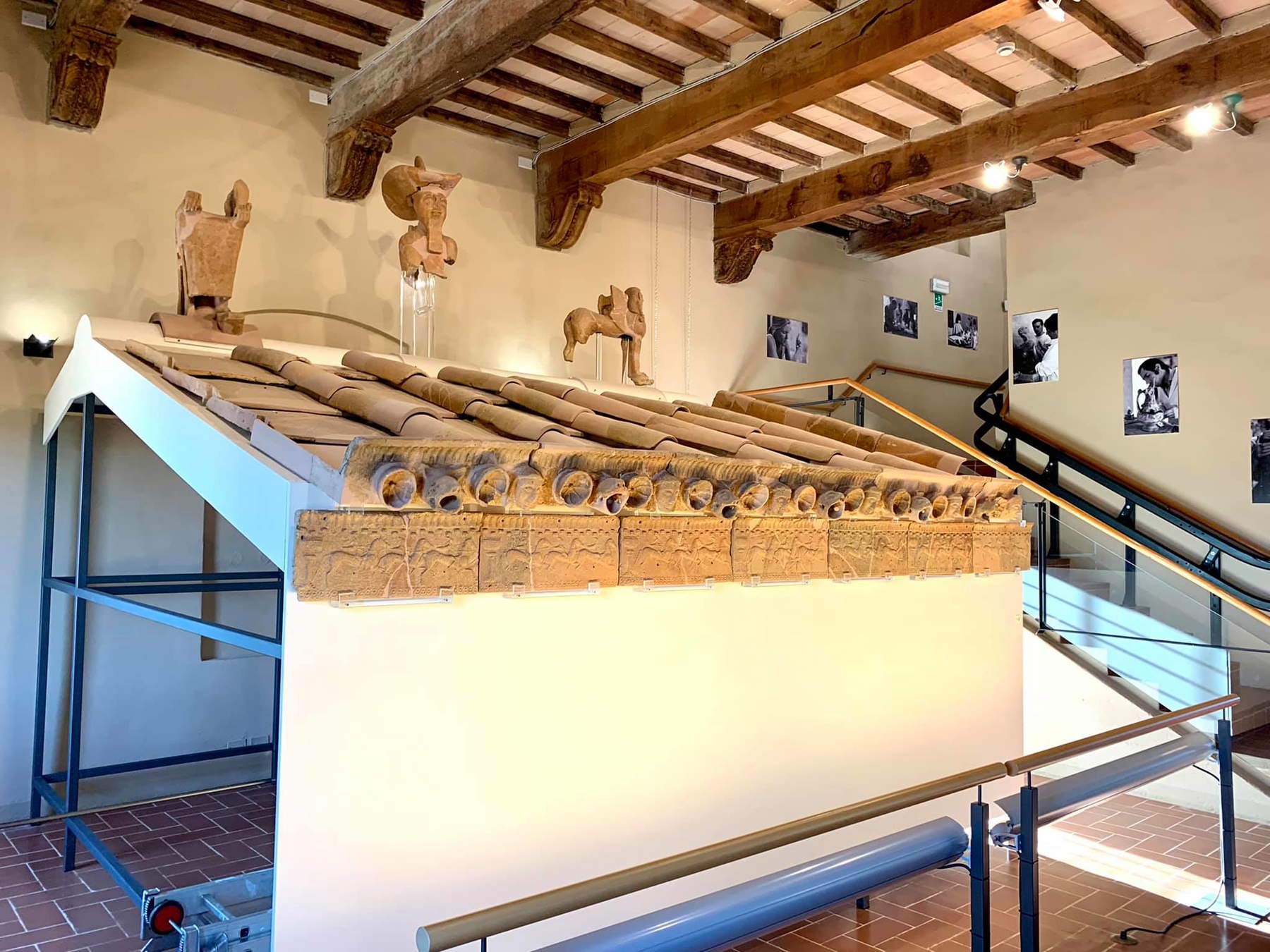

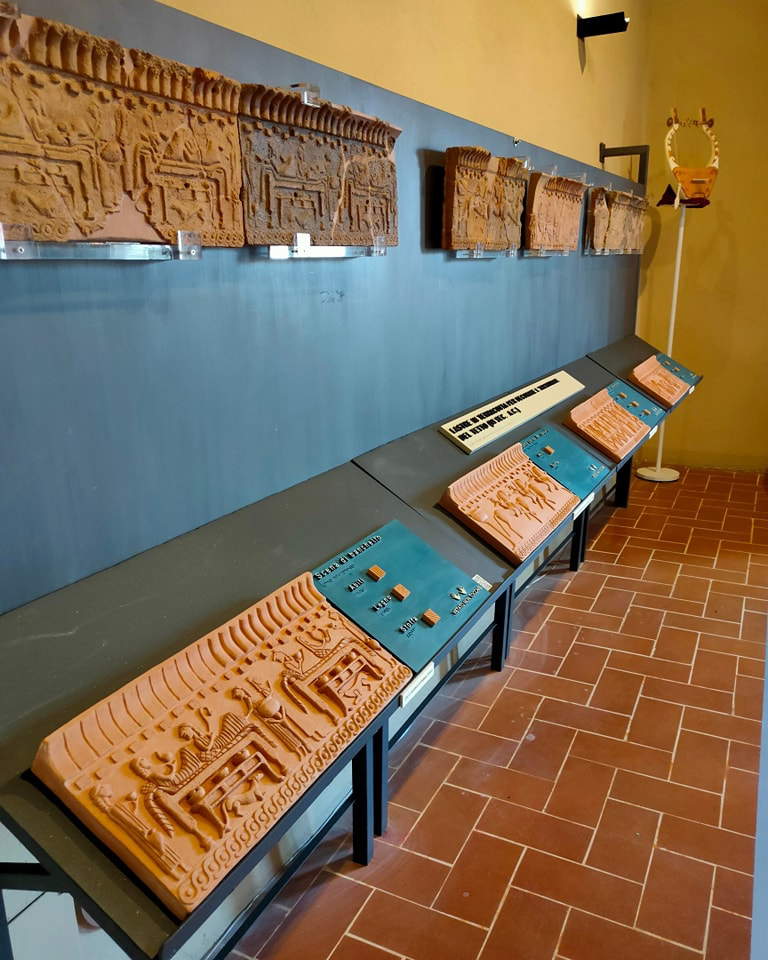
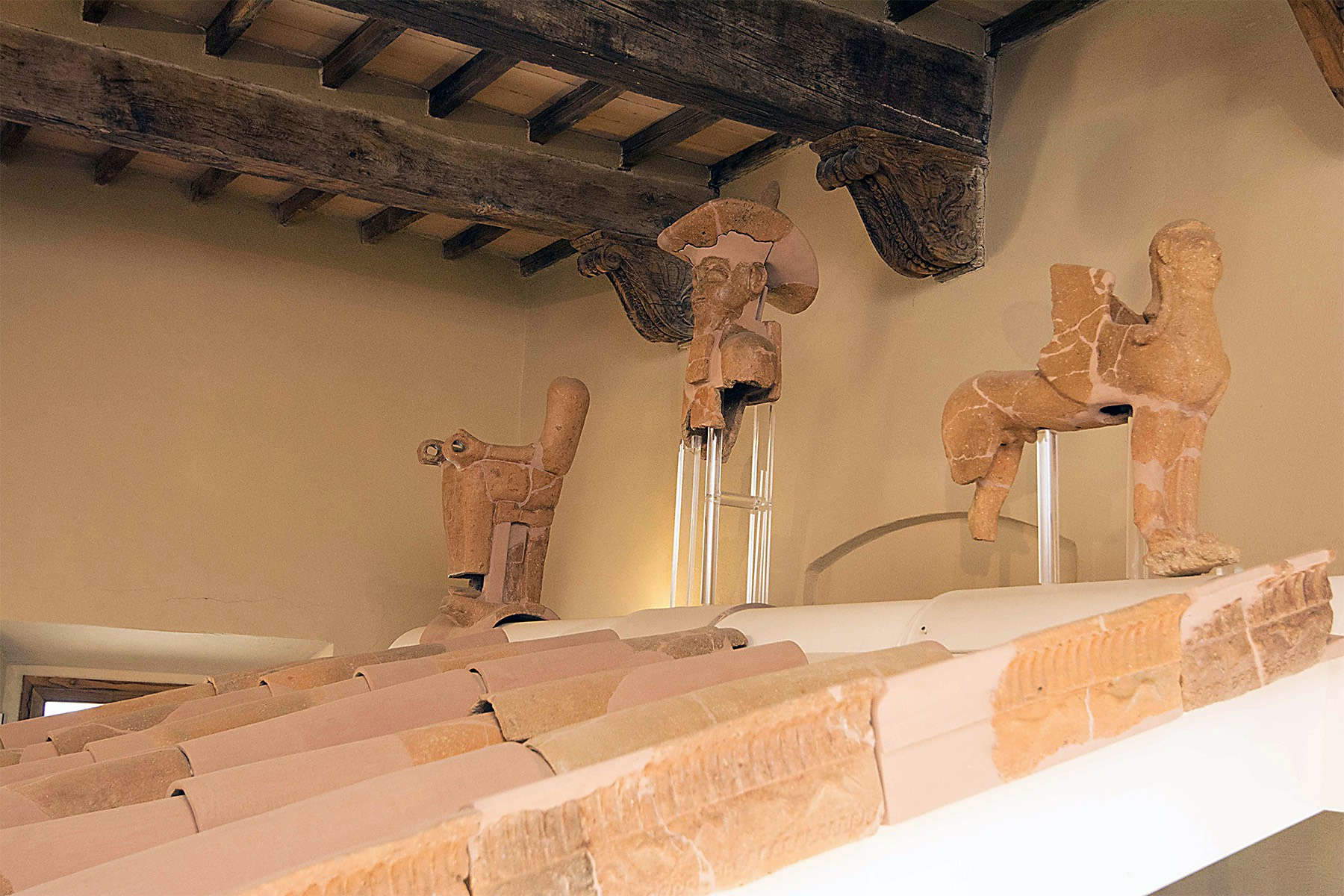
The figurative culture that permeated both the minor furnishings and the architectural decoration of the Archaic residence of Poggio Civitate aroused the idea that all artistic activity was to be attributed to potters and coroplasts working locally, who always used the same clay for their work. The artists of Murlo, with their fervid creativity, gave rise to two quite distinct productions: one made in mold, with decorative slabs made with matrices from southern models from Acquarossa and northern models from Chiusi; while the other was characterized by works in the round, such as large acroterial statues, for which the local “Murlo style,” a type of craftsmanship without reference models, with images of the progenitors of the dominant family “clan,” was identified. Unfortunately, at the end of the 7th century B.C., the first palace suffered a brutal fire that, according to studies conducted, took the inhabitants by surprise, who in their eagerness to flee and get to safety left the walls in a hurry without saving goods and valuables.
With the collapse of the roof and walls, everything left in the palace was encapsulated in the rubble, creating a kind of storage room sealed by the later construction that facilitated its perfect preservation. Confusion reigned supreme as the fire devoured everything it encountered, turning the place into an inferno of panic and despair, and in the chaos generated by the fire that ravaged the building, both men and small animals who escaped accidentally stepped on the tiles left to dry on the floor, leaving their footprints forever etched in the dust and mud. Among the materials recovered during the excavation of the Archaic complex at Poggio Civitate, a modest percentage comprise metal artifacts consisting mainly of small items of personal use and domestic tools, while prestigious artifacts such as pottery or weapons, presumably removed by the site’s inhabitants at the time of abandonment, are totally missing.
Studying the terrible fire, archaeologists easily discovered the two quite distinct phases of the palace, whose Orientalizing construction differed mainly in the decorations on the roof with animal and human figures. The latter were depicted seated or standing with their arms descending stiffly along their bodies and their hands locked in a tight grip as if to hold what might have been a stick or a wooden snake.
Becoming a symbol of the Murlo area is he who is jokingly referred to as “the big hat”: a man with a long, square beard who is distinguished precisely by his very wide-brimmed hat, adorned with a very high cap that rises to a point. Here, too, studies pointed out that this was nothing more than an acroterium, that is, a decorative element depicting a Princeps ancestor of the family of Poggio Civitate, which they placed on the highest point of the building so that it could perform a dual celebratory and apotropaic function, acting as a protective deity to the building and its inhabitants.
Murlo and the hills of Poggio Civitate and Poggio Aguzzo tell the stories of ancient peoples, whose traces through time are reproduced with extreme care and respect in the various rooms of the museum where one can glimpse, right from the start, what were tile roofs. Something that is now considered trivially structural was, in this period, the preserve of great kings or princes, and for that reason they featured rich openwork decorations, that is, with clay slabs that were carved, dried and later decorated with paint in which lotus flowers, animals or mythological scenes were depicted. Near the Palace reconstruction, the traveler’s eye might be caught by tiny fragments of tiles called hospitales, which were ivory slabs in which the name of the host and guest were engraved. Among the specimens found, one of the fragments bears a partially legible inscription, in which the story emerges of an Etruscan Sardinian who, having passed through Tarquinia, came to the Lord of Murlo who protected him, and it is also possible that the collapse of the building contributed to the preservation of part of the archives of a prestigious local family, containing documents relating to their relations with other aristocratic families of the time.
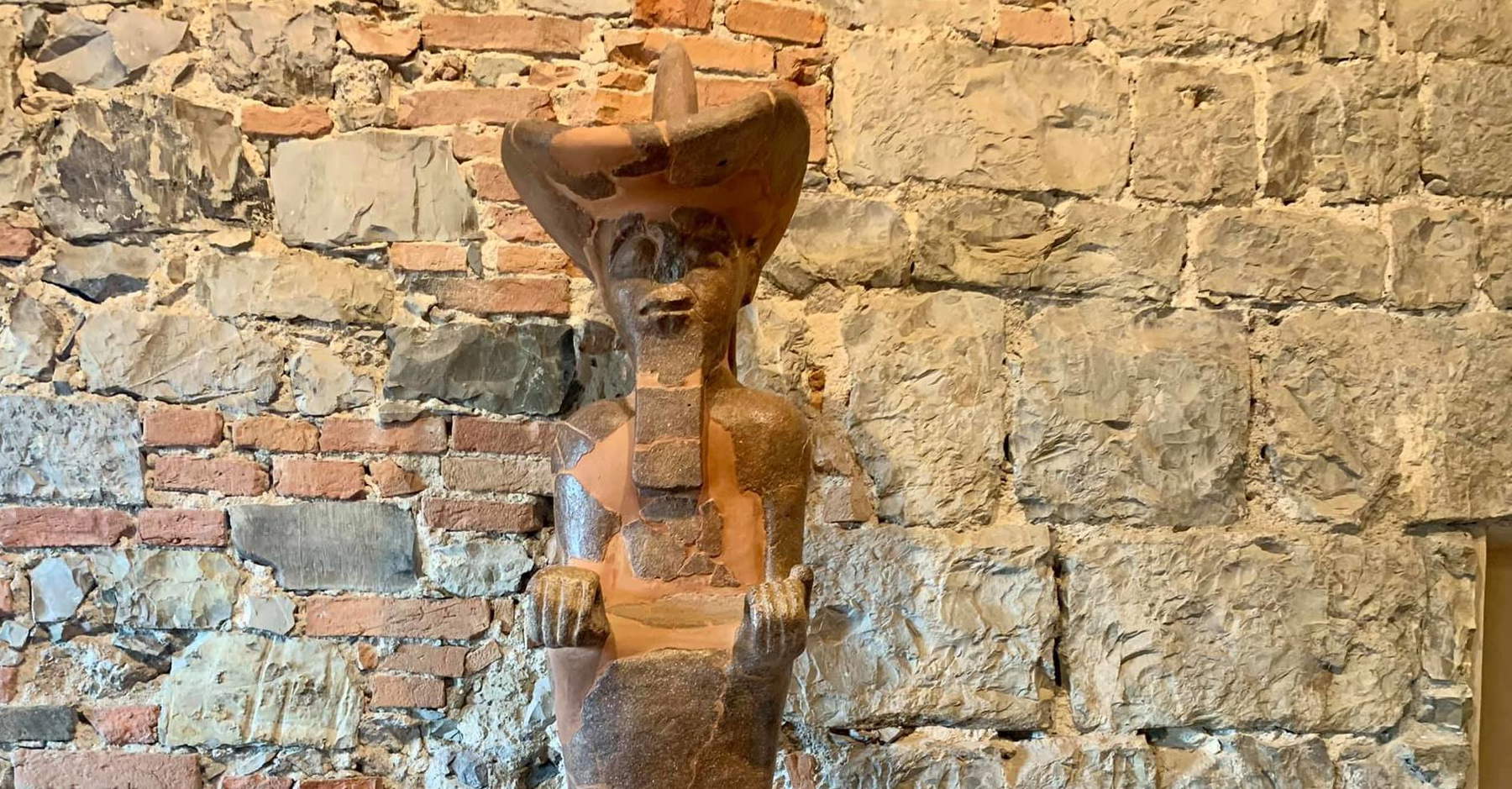 The
The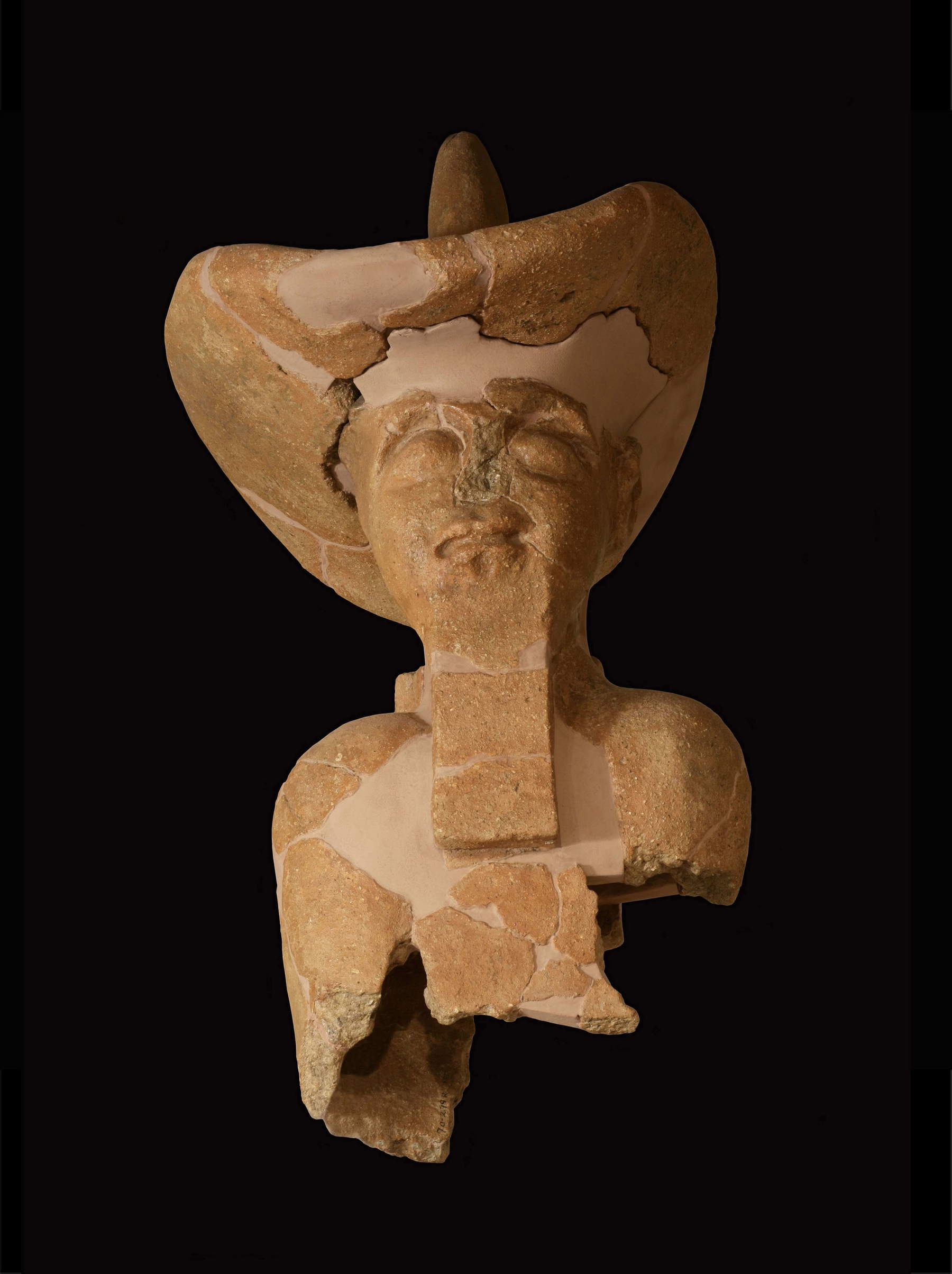 The
The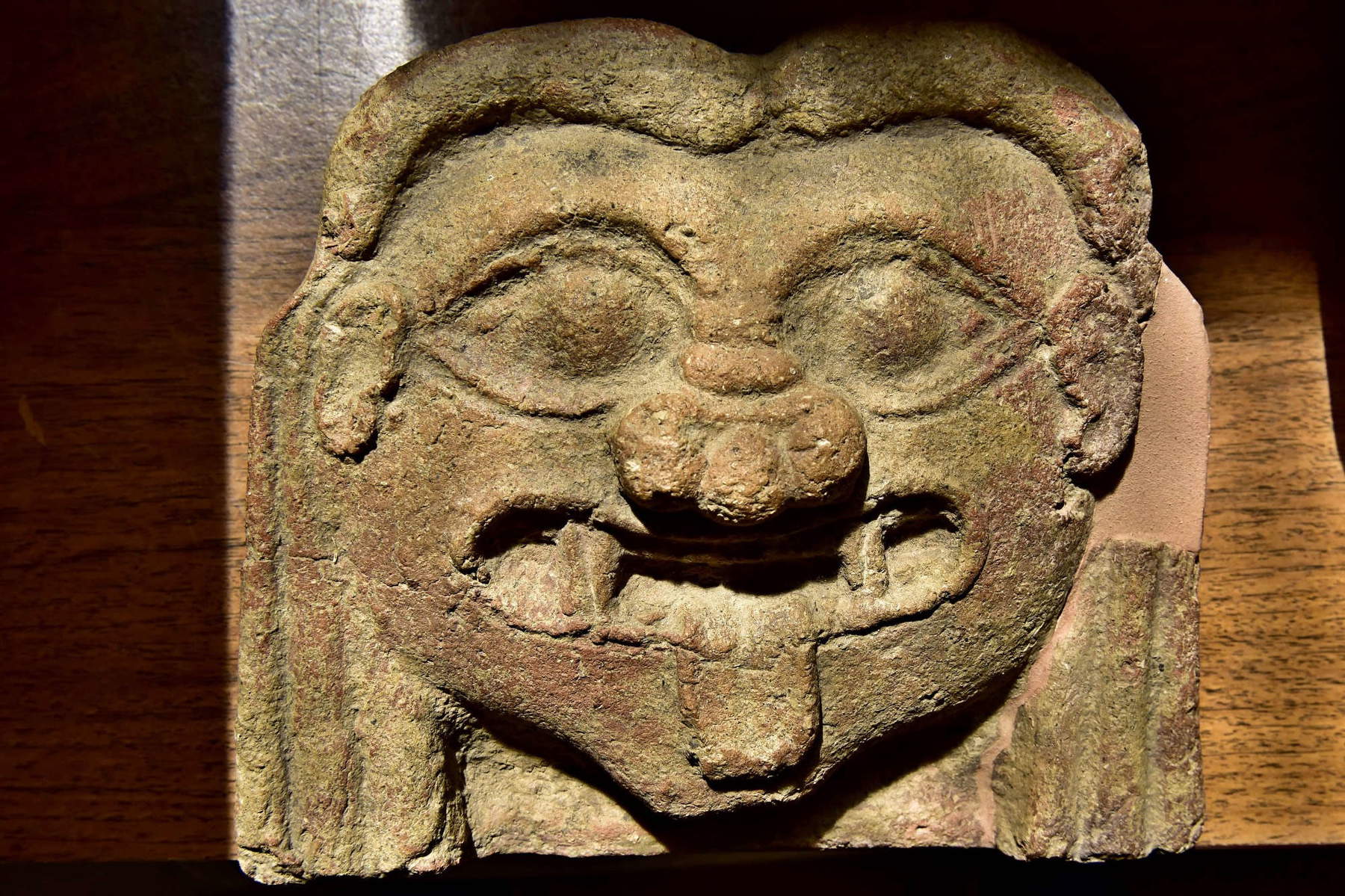
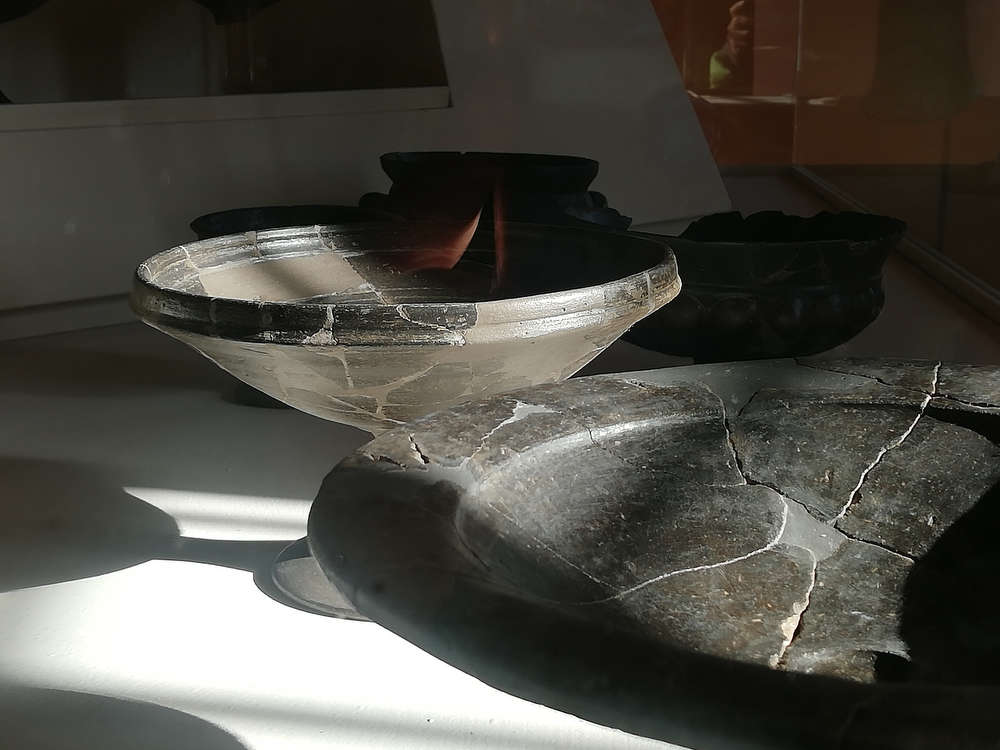
Around 525 B.C. the inhabitants most likely moved elsewhere, abandoning the site, but only after deliberately destroying the second phase palace. A destruction, this, evidenced by the care with which the architectural decorations were buried in special pits and the construction of an embankment around the built-up area that suggested to scholars an orderly and conscious exit from the site.
And so, leaving behind the two grandiose phases of the aristocratic palaces, we head to the last rooms on the highest floor of the building where we discover numerous grave goods from the Poggio Aguzzo necropolis , which represents the main known burial site associated with Poggio Civitate. Located on a modest hillside to the northwest of the settlement, it was partially explored in 1972 by the U.S. University Mission, which revealed nine inhumation pit tombs datable to the Middle and Recent Orientalizing period, then to the second half of the 7th century B.C.
In the recovered grave goods, a pronounced warrior connotation emerged, evidenced by the presence of defense and throwing weapons in at least four of the burials, and although with a limited sample, variations in armament suggested different military roles related to age and social status. It is interesting to discover, among the various glass cases, iron spears with related tips, sauroteres, swords and drinking vessels, including a bucchero kyathos with a depiction of a warrior and a wine jug, called an oinochoe, with an unusual shape, probably produced in the ceramic workshops of Poggio Civitate. As one proceeds scrupulously among the weapons and everyday objects found in the necropolis, each step will be punctuated by the light coming from a large window that opens into the quiet immensity of the Tuscan hills, inviting one’s gaze to continue that ancient history that unfolded on the high ground, right there in front of us, of Poggio Civitate. One discovers a landscape that changes with the seasons, but always remains sweet and still, and in which the past and the present play playfully with each other, overlapping for eternity.
Warning: the translation into English of the original Italian article was created using automatic tools. We undertake to review all articles, but we do not guarantee the total absence of inaccuracies in the translation due to the program. You can find the original by clicking on the ITA button. If you find any mistake,please contact us.